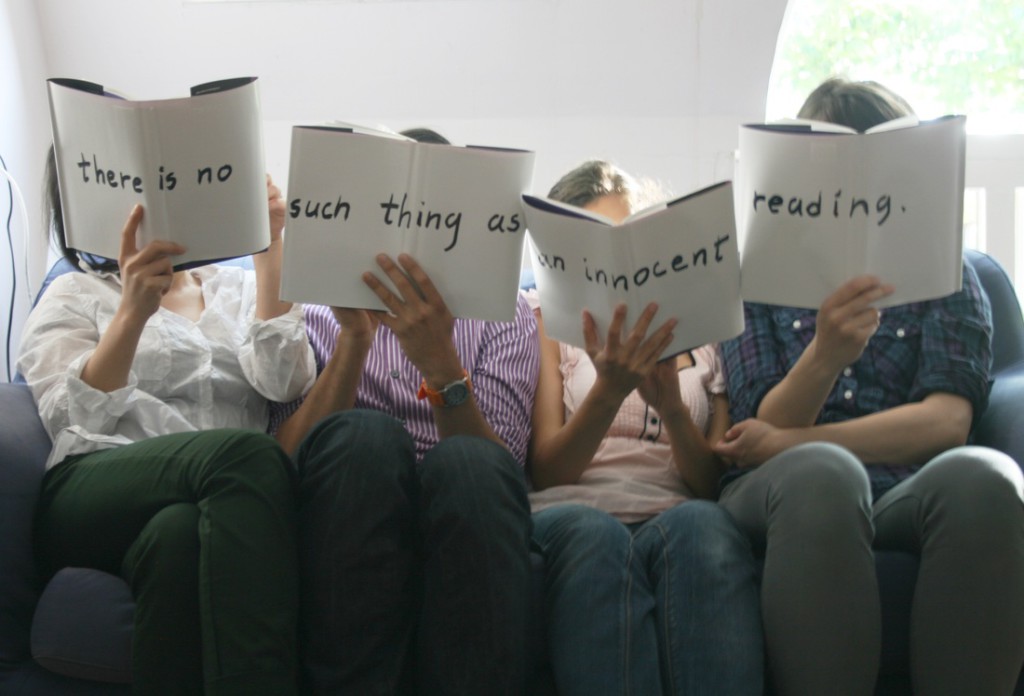Door-to-Door Read-in
The Door-to-Door consists of literally going door-to-door and requesting “neighbours” to host a group reading session spontaneously. Our Door-to-Door reading sessions have been our first experiments through which we challenge our conventions around reading. Searching for a spontaneous host for an instant reading session challenges notions of hospitality, our relationship to public and private realms, and where reading together should take place. It uses the uncomfortableness of the whole situation in order to investigate how normally reading practices perform a certain non-physicality. What happens when one is constantly reminded that something is at odds while reading together.
Read-in’s interventions experiment with the political, material, and physical implications of collective reading and the situatedness of any kind of reading activity.
Some notes on the door-to-door experiences:
“Read-in experiments with conventions around reading, being interested in the material, affective and political dimensions of reading together and studying (with) the legacies of feminist reading groups. One way in which the reading group operates is by going door to door and searching for a spontaneous host for an instant reading session. The group works as an open practice, therefore it has varied between three up to about twenty readers. The threshold encounters with our potential hosts and the processes of inhabiting someone’s living space for a semi-public meeting or reading group are part of Read- in’s experiments through which we try to challenge our taken for granted reading practices. These experiments include investigations into the places where reading (together) takes place, its relationship to public and private realms, the power relations in reading group practices and how these reading practices might perform a certain non-physical experience. While reading, we allow ourselves being strangely immersed in the reading of a text. I feel interrupted when for example my body is aching or when noises from the neighbours are making reading difficult. Thus, being immersed in text comes with an effort of trying to forget the world around us. Read-in looks into this particular disapproval of bodily signals (while reading) and explores its embeddedness in and relationship to the Western phenomenon of the body-mind split. The threshold encounters and the entering of a stranger’s home provokes strong feelings of being uncomfortable. We experience this uncomfortableness as a state of the body through which we cannot but be aware of our bodies while reading. It allows us to investigate the inseparable relationship between the content of a book, our physical reading and the site of reading.”
Excerpt from:
Annette Krauss. UNLEARNING MY LIBRARY. BOOKSHELF RESEARCH AS AN INVESTIGATION INTO THE PRIVILEGES OF THE SUBJECT. In: Janneke Wesseling, Onno Schilstra (eds). Changing Art Education. The role of Practice in Theory. Lectoraat Kunst, Theorie & Praktijk, Art Aacdemy, Den Haag 2015, pp.34-43.
